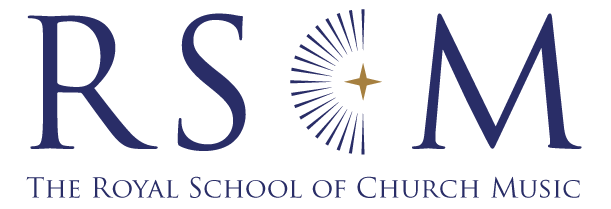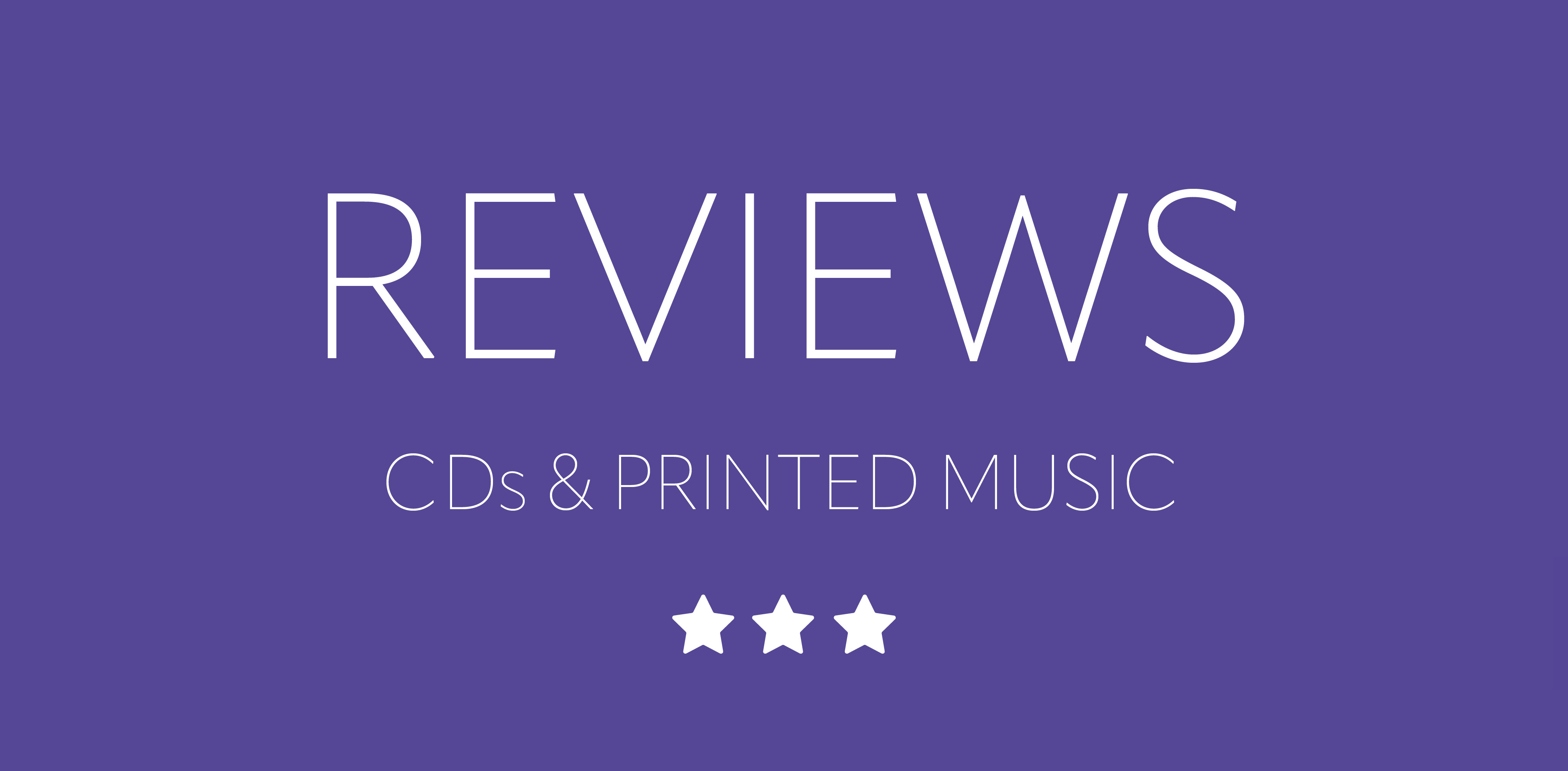

*Worth hearing
**Recommended
***Essential listening
CHORAL CDs
**
JUBILATE DEO: A CELEBRATION OF 150 YEARS
Choir of Arundel Cathedral / Alexander Eadon, John Sharples (organ) / Elizabeth Stratford ♦ https://arundelcathedral.uk
There has been a Catholic community in Arundel for over 1,000 years, but the present building was completed, in 1873, hence its 150th anniversary two years ago. Composer and pianist Kristina Arakelyan wrote a setting of the Jubilate Deo, (‘O be joyful in the Lord’), commissioned by the cathedral. Her music has an appealing freshness with an atmospheric organ part and builds to a powerful climax. It is given a first-rate performance by the Arundel Cathedral choir under Elizabeth Stratford.
The disc is a survey of the church year from Advent to Corpus Christi before skipping to the dedication of the cathedral. The sound is clean but warm; the way that phrases are shaped is musically satisfying, not least in Ola Gjeilo’s Ave Generosa and Jonathan Dove’s Seek him that maketh the seven stars. The disc is notable for featuring 10 different solo voices. It concludes with Parry’s large-scale anthem Hear my words, ye people, with two extended solo ‘verses’ as well as using a solo quartet for the semichorus, and a substantial and well-played organ part.

***
THAT SWEET CITY: LEIGHTON VERIS GRATIA AND VAUGHAN WILLIAMS AN OXFORD ELEGY
Choir of The Queen’s College, Oxford / Rowan Atkinson (narrator) / Nick Pritchard (tenor) / Alaw Grug Evans (soprano) / David Cuthbert (flute) / Britten Sinfonia / Owen Rees ♦ Signum Classics SIGCD917
Compare and contrast: the young Kenneth Leighton (1929–88) celebrated the arrival of spring in Veris Gratia; the elderly Ralph Vaughan Williams (1872–1958) was nostalgic for an idyllic past in An Oxford Elegy. Both pieces, however, were premiered within a year of each other in The Queen’s College, conducted by Bernard Rose in 1951 and 1952 respectively. Leighton wrote Veris Gratia before his formative period of study with Petrassi and there is an influence of English pastoralism, including earlier Vaughan Williams as well as Finzi.
Neither piece is strictly ‘church music’, but both composers wrote significantly for the church and this disc will be welcomed by many church musicians. Leighton’s Veris Gratia, rarely heard in concert or recording, is a setting of medieval poems: a hymn to nature from its opening dawn prelude to a choral epilogue. Vaughan Williams’s better-known Oxford Elegy is distinguished here by Rowan Atkinson’s narration. Put aside thoughts of Mr Bean – Atkinson narrates beautifully, as if having a thoughtful conversation. The choir, vigorous in the Leighton and more introspective in the Vaughan Williams, responds sensitively to every detail of Owen Rees’s interpretation.

**
A YEAR AT ST EDMUNDSBURY
Choir of St Edmundsbury Cathedral / Richard Cook (organ) / Timothy Parsons Regent REGCD591
As normal with Regent’s long-established ‘A Year at ...’ series, we are taken on a journey through the church year, in this case from Paul Trepte’s People, look East for Advent to James MacMillan’s A new song for Christ the King. The feast of St Edmund (between Remembrance and Christ the King) is acknowledged with Edward Picton-Turbervill’s An invocation for worship, one of four new works recorded here for the first time. Ghislaine Reece-Trapp’s Epiphany Star, Timothy Parsons’ The spacious firmament on high and a new version of Mark Blatchly’s For the Fallen complete the quartet. Well-known anthems by Stanford, Bairstow and Howells add to the mixture.
Two classics from different centuries – the simplicity of Sally Beamish’s 21st-century In the stillness and complexity of Robert Parsons’ 16th-century Ave Maria – show how Timothy Parsons has revived and rebuilt the choir to the highest musical standards since his appointment as director of music in 2021, following the Covid lockdowns. This CD must have been his final recording before moving to Wells Cathedral.
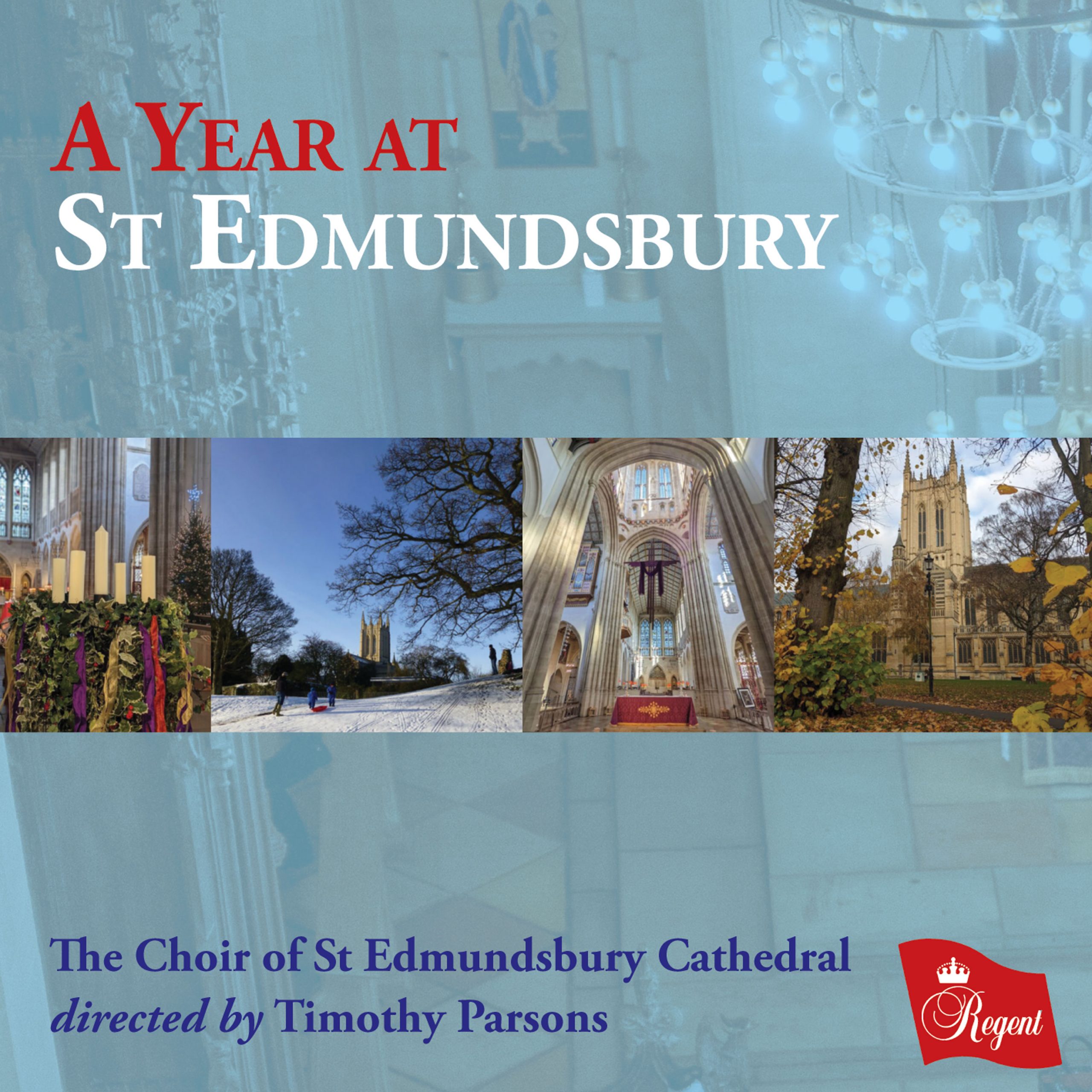
**
I WAS GLAD: PARRY CHORAL MUSIC
Choir of Christ’s College, Cambridge / Julian Collings (organ) / David Rowland ♦ Regent REGCD580
Despite the title, the major focus of this CD is Parry’s Songs of Farewell, which have been in the repertoire of Christ’s College chapel choir for 20 years. For this recording, marking the 40th anniversary of David Rowland as its director of music, singers who were members of the choir during that period were invited to join the current choir. Then, the following day, all chapel choir alumni were invited to join for the remainder of the recording, forming a choir of over 100 singers for I was glad, Hear my words, ye people, Blest pair of sirens, the less well-known Music, when soft voices die and, as the conclusion, Elgar’s ‘Last Night of the Proms’ arrangement of Jerusalem (with an organ transcription by Joseph Wicks).
The size of the choir is thrilling in the opening and closing pages of I was glad, and always well disciplined, so that the unaccompanied Songs of Farewell still sound precise and with excellent ensemble. The quiet intensity of Parry’s setting of Shelley’s Music, when soft voices die will delight listeners who enjoy the ‘O pray for the peace of Jerusalem’ section of I was glad.
Judith Markwith
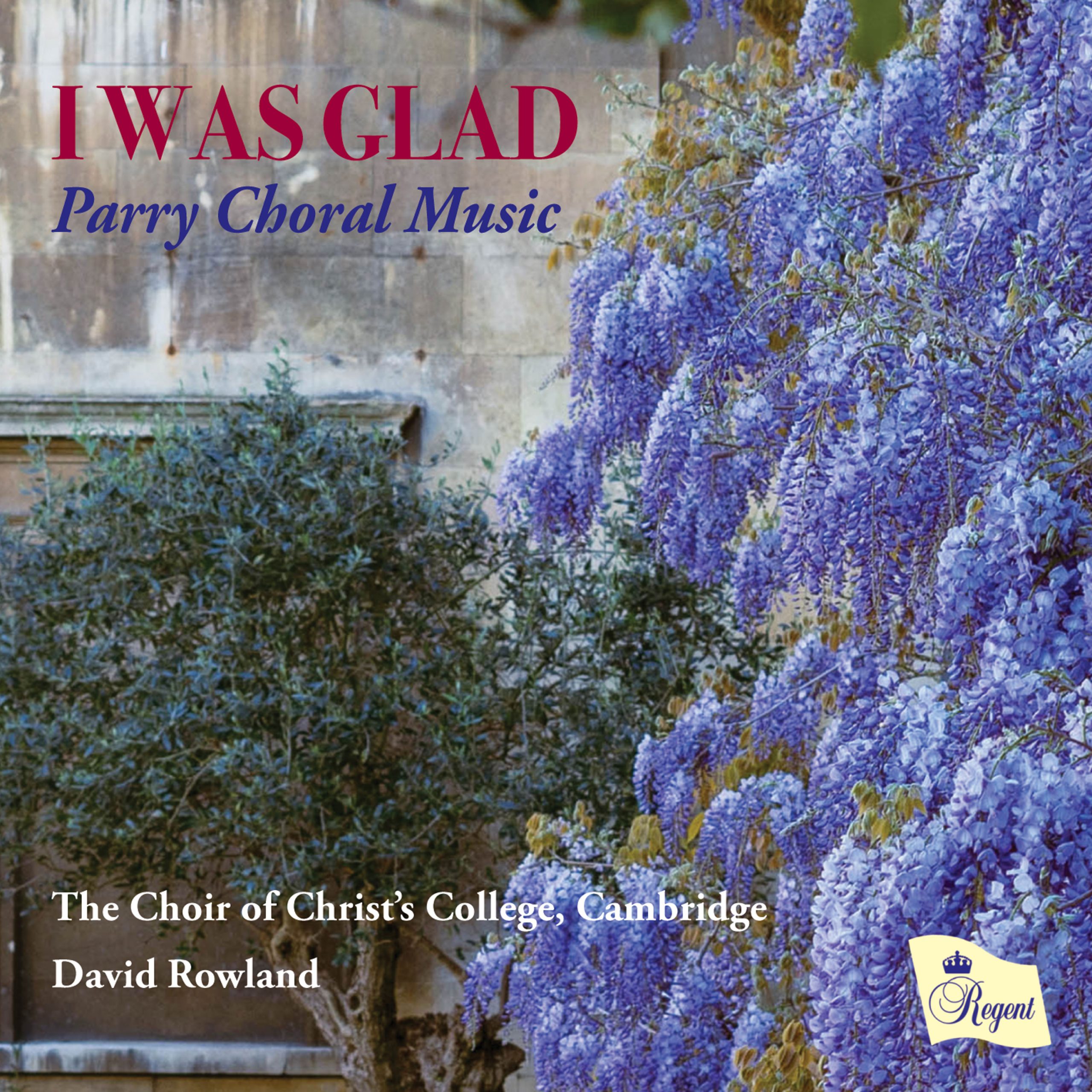
***
BACH CANTATAS
Oxford Bach Soloists / Nick Pritchard (tenor) / Yu-Wei Hu (flute) / Tom Hammond-Davies ♦ Signum Classics SIGCD869
Tom Hammond-Davies founded the Oxford Bach Soloists in 2017 to perform J.S. Bach’s complete vocal works in the order and over the time that he wrote them, with original instrumental and choral forces and recreating the music’s liturgical setting in original venues or places with a similar acoustic and feel. In Hammond-Davies’s words, ‘our focus was not on recording … it was about living the music as all those who performed and heard it did, tracing [Bach’s] steps through each note and phrase.’ This recording enables us to experience three of the cantatas: a welcome spin-off from the performers’ musical journey.
At the centre is Christ lag in Todesbanden (BWV 4), one of Bach’s earliest surviving vocal works, written for Easter Sunday 1707. The choir sparkles in this performance. Bach’s only extant tenor cantata, Ich armer Mensch (BWV 55), is with oboe d’amore and flute. Tenor Nick Pritchard sings here and in the well-known Ich habe genug in its less familiar arrangement for high voice and flute (BWV 82.2). Throughout the three cantatas, choir, orchestra and soloists are all excellent.

*
YVES CASTAGNET: MAGNIFICAT
Thaïs Raï-Westphal (soprano) / Anouk Defontenay (alto) / Jordan Mouaïssia (tenor) / Carlos Builes Velez (bass) / Yves Castagnet (organ) / Maîtrise Notre-Dame de Paris / Henri Chalet ♦ Warner Classics 5021732250858
This recording of a new setting of the Magnificat marked the reopening of the Cathedral of Notre-Dame de Paris last December. Organist-composer Yves Castagnet has held the post of choir organist there since 1988, a role that includes coaching for the cathedral’s choir school, La Maîtrise Notre-Dame de Paris. The recording was made in 2022 in another Paris church, the Basilica of Sainte-Clotilde. Completing the album are three psalm settings by Castagnet.
The music falls into the tradition of French organ composers such as Maurice Duruflé and has long organ introductions. There is much variety of colour throughout the 10 sections of the Magnificat. The young singers of the La Maîtrise choir have their distinctive and attractive sound with more individuality than often heard in an English cathedral blend.
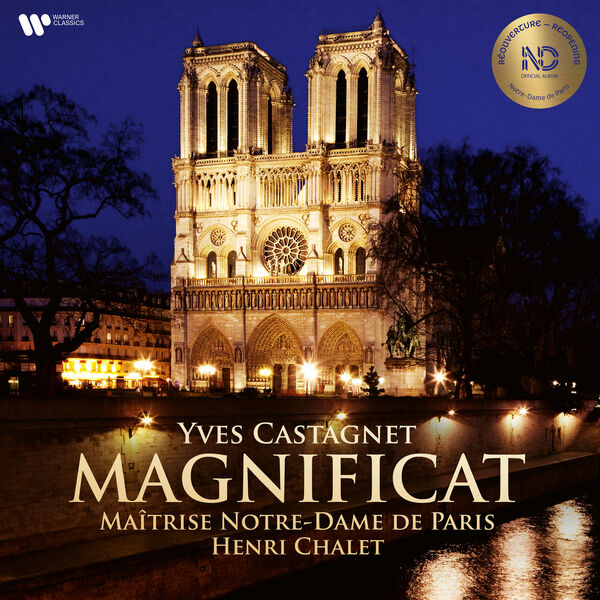
*
MUSIC FROM AN INNER SPACE: PSALMS AND SACRED SONGS BY RACHEL CHAPLIN
Evi Dobner (vocals) / Rachel Chaplin (piano) / Beatrice Philips, Flora Curzon (violin) / Oliver Wilson (viola) / Carina Drury (cello) / John-Henry Baker (double bass) / Sam Chaplin (trumpet) ♦ https://rachelchaplinmusic.bandcamp.com
There is also a sample track on the website, and plenty more to be found on YouTube by searching for ‘Rachel Chaplin’, which will give an idea of these contemplative, spiritually infused pieces. They have the feel of contemporary folk songs, sung with a clean, pure voice, accompanied primarily by piano and with other, mostly sustained, instrumental lines. If the harmonies are felt to be static, I am sure that is the point – to be suspended timelessly. The 10 tracks, including four psalm settings and a setting of the Lord’s Prayer, are well worth exploring.
Julian Elloway

ORGAN CDs
**
L’ORGUE GRÉGORIEN: A YEAR OF CHANT-BASED ORGAN MUSIC
Ben Bloor plays the 1954 Walker organ of the London Oratory Church ♦ Ad Fontes AF011
Ben Bloor’s debut solo organ disc, recorded at Brompton Oratory where he is organist, is of organ music based on Gregorian chant. The mainly 20th-century French programme includes works by Maurice Duruflé, Charles Tournemire, Jehan Alain and the lesser-known Auguste Fauchard (1881–1957), whose 16-minute Le mystère de Noël, a theme and variations depicting aspects of the Nativity, is a highlight of the disc.
There are two of Sigfrid Karg-Elert’s Cathedral Windows and British pieces by Arthur Wills, Ralph Downes, who was responsible for the tonal design of the organ, and a short prelude on the Advent hymn ‘Conditor alme siderum’, commissioned especially for this disc from Matthew Martin, who was previously organist at the Oratory and is well acquainted with the instrument. The handsome hardbound booklet includes incipits for all the plainchant and a full specification of the organ. Bloor claims to have used every stop on the instrument in the course of the CD. The registration, inventive and colourful, always sounds right for the music, which is played with an assured technique and a keen ear for the drama that is often found within these pieces.
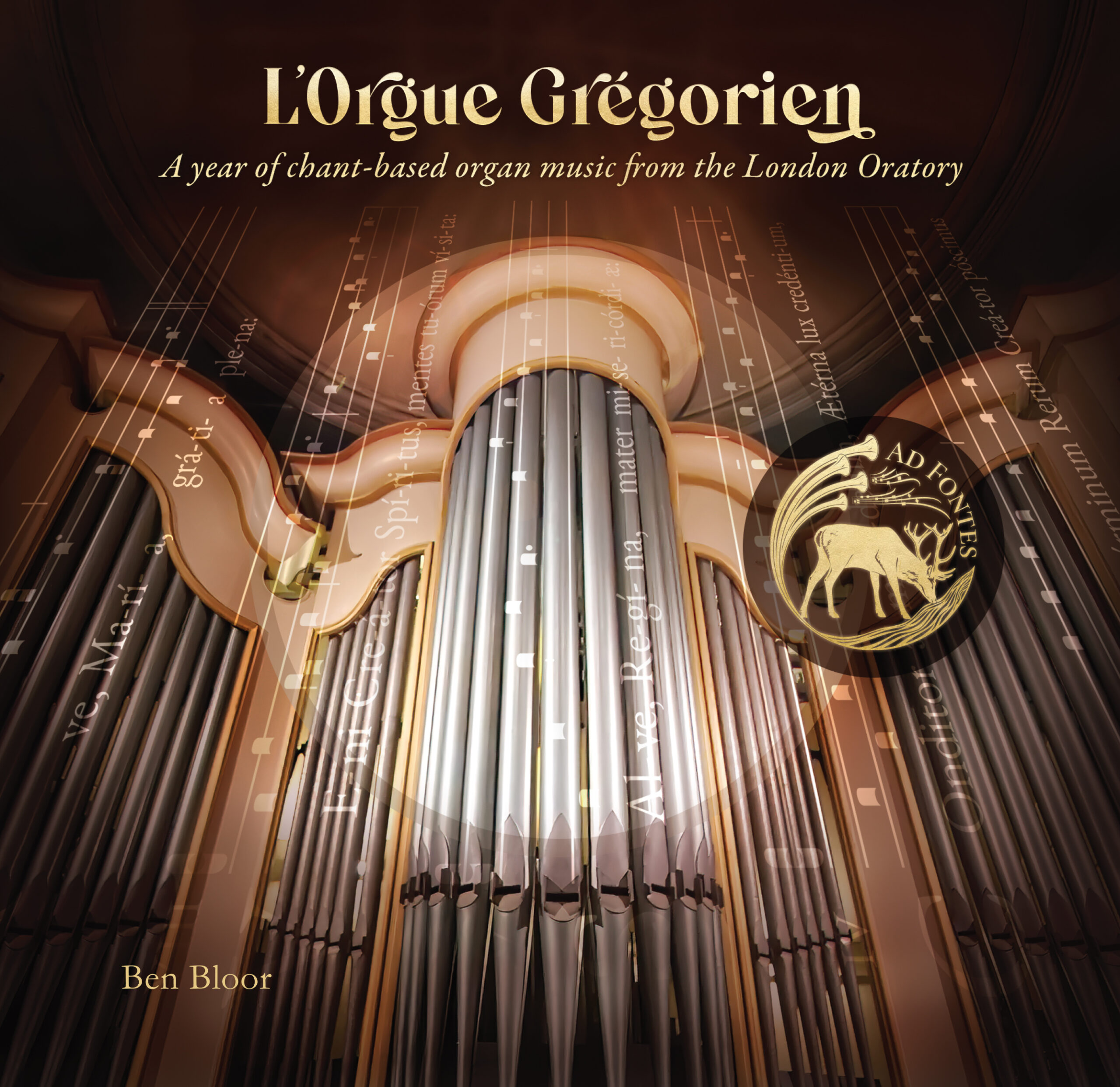
**
THE PLANETS: GUSTAV HOLST
John Challenger plays the Father Willis organ of Salisbury Cathedral / Choristers of Salisbury Cathedral / David Halls ♦ www.salisburycathedral.org.uk
The CD liner describes the music as having been ‘arranged for the Father Willis organ of Salisbury Cathedral by John Challenger’ and it sounds very much arranged for that specific instrument, for the acoustic and for the feel of the building. The Planets Project started in 2023 and became a two-year community music project with local schools, the cathedral’s education department and the music charity La Folia. As well as the audio recording on CD, there is a film that combines the complete music (in its organ arrangement) with atmospherically lit, night-time shots of the interior of the cathedral, including some drone footage. The film is free to view on YouTube. The cathedral visuals give the music a spiritual feeling of the enormity of the universe and its creation. Challenger does not imitate Holst’s orchestration but recreates it in terms of the organ. It is a formidable achievement, and one that is effective at a profound level.
Julian Elloway
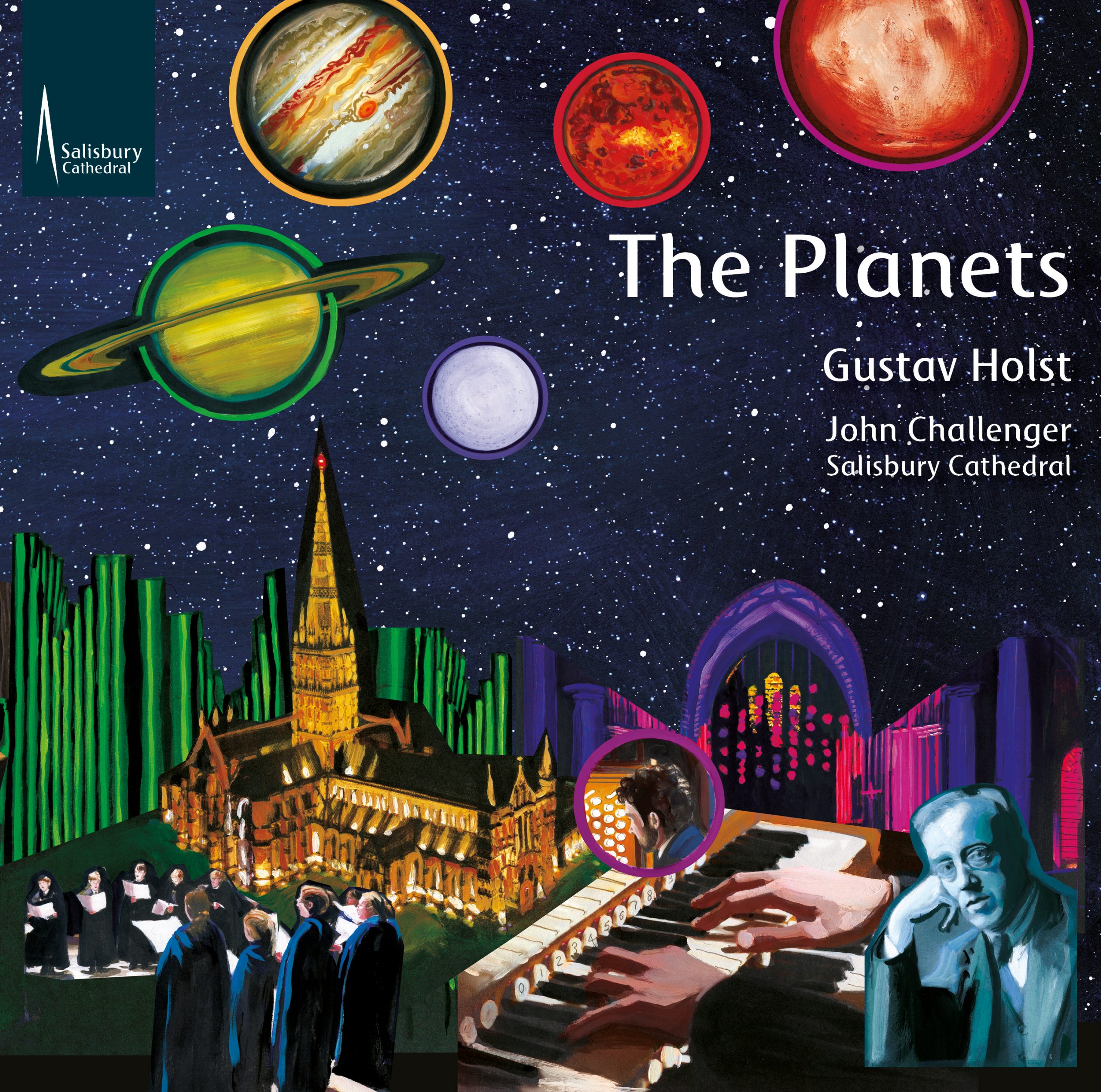

E EASY
M MEDIUM
D DIFFICULT
CHORAL MUSIC
ASCENSION AND PENTECOST
ASCENSION HYMN [E]
Charles Wood
SATB and organ
Church Music Society RS159 £2.50
A WHITSUN CAROL [M]
Charlotte Baskerville
SATB
Encore Publications 020802 £2.25
Church Music Society already publishes a four-part Ascension anthem by Charles Wood (1866–1926), the lively O Rex gloriae that dramatically depicts Christ’s triumphant ascent to heaven followed by a plea to send the spirit of truth. Ascension hymn, written 14 years later, is very different, and not only as a result of being easier. Four verses from a poem by Alfred Graves (best remembered as the father of the poet Robert Graves) are repeated to a maestoso tune, sung SATB, T/B alone, SATB with tune in the tenor and finally all voices unison. The continuous organ part has more variety and builds to a strong climax.
John Henry Newman’s ‘Come, Holy Ghost, who ever One’ (a translation of St Ambrose) last appeared as an office hymn for terce in Ancient & Modern Revised. Charlotte Baskerville has rescued the words from neglect with this Pentecost anthem in which the power of the Spirit can be felt, latent in the first verse, bursting out in the second and finally with restrained passion in the doxology that concludes ‘Come, Holy Ghost’. Different voices kick off each verse; the expressive vocal lines and flexible bar lengths allow the words to speak with gentle but intense feeling.
MUSIC FOR THE SPIRIT [mostly E/M]
ed. Stephen Harrap
Mostly SATB, with and without accompaniment
Breitkopf ChB5384 €26.90
This wide-ranging anthology of 46 pieces spans five centuries and much of western Europe. The subtitle describes the selection as suitable ‘for Pentecost and other occasions’; purchasers will acquire a well-edited anthology of music suitable for Pentecost, Trinity and many subsequent summer Sundays. The 13th-century Alta Trinità beata that opens the volume, Walford Davies’s God be in my head, Wood’s O thou the central orb, Parry’s My soul there is a country, Bruckner’s Os justi and Bairstow’s Let all mortal flesh keep silence are among those that one might expect to hear on occasions other than Pentecost.
There are other surprising inclusions for an anthology centred around Pentecost, such as ‘Abide with me’, presented as a hymn with Monk’s Eventide, as well as the more predictable ‘Come down, O love divine’ to Down Ampney, both hymns with new last-verse descants by the editor. Original languages are used throughout: English, Latin and German without translation and Ibsen’s Norwegian text for Grieg’s Pinesalme (‘Pentecost Song’ from Peer Gynt) plus a German singing translation. The two pieces by Hugo Distler (1908–42) are probably well-known to German church musicians but may not be familiar to English speakers. I never knew that Reger had written 20 English-language Responsories for the American Lutheran church, but here we have his Pentecost Responsory And there appeared unto the Apostles. I had also not come across God, who at this time by the non-conformist Canterbury shoemaker, Thomas Clark (1775–1859). Purchasers will need to do their own research, as no information is given about the composers or the music beyond the title information at the head of each piece.
I have concentrated on unusual or lesser-known pieces. There are also the expected contributions from Tallis, Attwood, Boyce, Gibbons, Philips, Tye and many others. I was pleased to see Mozart’s Veni Sancte Spiritus KV 47. Even if only a small number of English-speaking choirs will purchase complete sets of copies, it is a volume that any choir director will benefit by acquiring, as it will suggest new ideas to refresh their repertoire.
James L. Montgomery
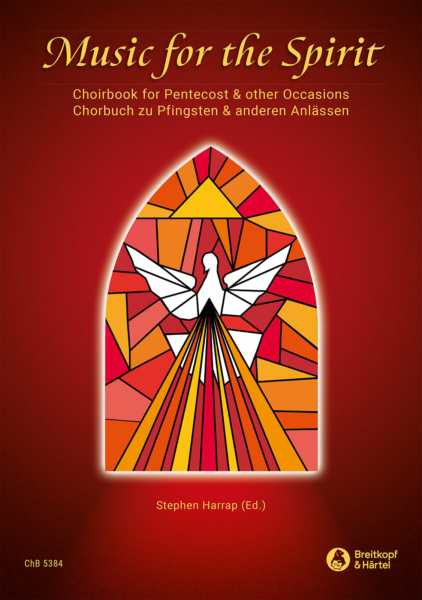
UPPER VOICES
OF ANGEL’S SONG [D]
Philip Wilby
SA with divisions and organ
Banks Music Publications GCL050 £1.95
It was for the Salisbury Cathedral choristers that Philip Wilby made this upper-voice arrangement of his original SATB anthem with a text by the 14th-century English Augustinian mystic Walter Hilton. The words are extracted from Hilton’s treatise on the experience of hearing the song of an angel. The organ part provides rich harmonies underpinning the voices. Three times a different solo voice starts, then is joined by unison voices that split and eventually land on more complex chords, firstly for ‘God and Ghostly things’ (with an effective pedal point there), then for ‘Angels and holy souls’, and finally for an ecstatic, quiet repetition of the word ‘Jesus’ over the final 26 bars. It is a beautiful piece.
Julian Elloway
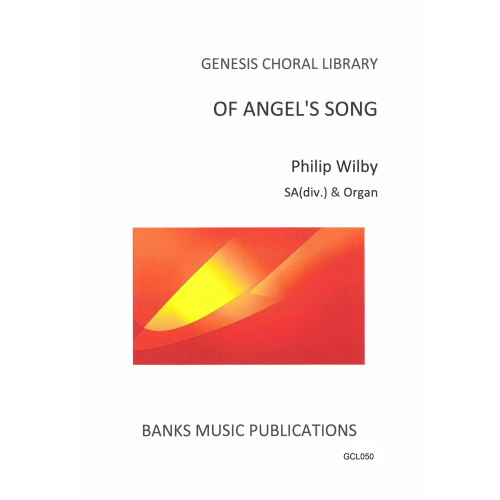
SATB ANTHEMS
PRO DOLOROSA EIUS PASSIONE [M]
Dawn Waters
SATB
Banks Music Publications KCS017 £1.95
AVE MARIA [E]
Dawn Waters
SATB and organ
Banks Music Publications KCS023 £2.25
Pro dolorosa eius passione, a short prayer asking for God’s mercy, starts with a feeling of plainsong. Static harmonies give way to more expressive chords on the word ‘passione’, followed by a louder repetition of ‘miserere nobis’ and a reflective and repetitive ending. The repetitions and slow-moving harmonies at start and finish turn this into a contemplative and musically satisfying prayer. When I opened the same composer’s Ave Maria I thought ‘Oh, no’, as I saw the words made to fit the opening theme of Brahms’s first Cello Sonata, one of my favourite pieces of chamber music. But it works. If we can enjoy choral versions of Bach/Gounod and Schubert settings of Ave Maria, we should be able to enjoy this arrangement derived from Brahms. Altos will especially enjoy it, as they have the lion’s share of the tune.
Julian Elloway
PARTA QUIES [M]
Ester Kay
SATB with divisions and organ
Acuta Music 978-1-873690-19-2 £1.60
Here is a useful piece for funerals and memorial services, and especially where the congregation comes from a variety of different faith backgrounds (or none at all). The short text, from the opening of the poem Parta Quies by the non-religious A.E. Housman, does not mention God, but different listeners will interpret in their own way the ‘imperishable peace’ for the person to whom the anthem is addressed. Against an organ semiquaver pattern marked ‘hypnotic’, the choir’s early moments of astringency resolve through powerful crescendos onto A major and then a final, bright E major cadence.
James L. Montgomery
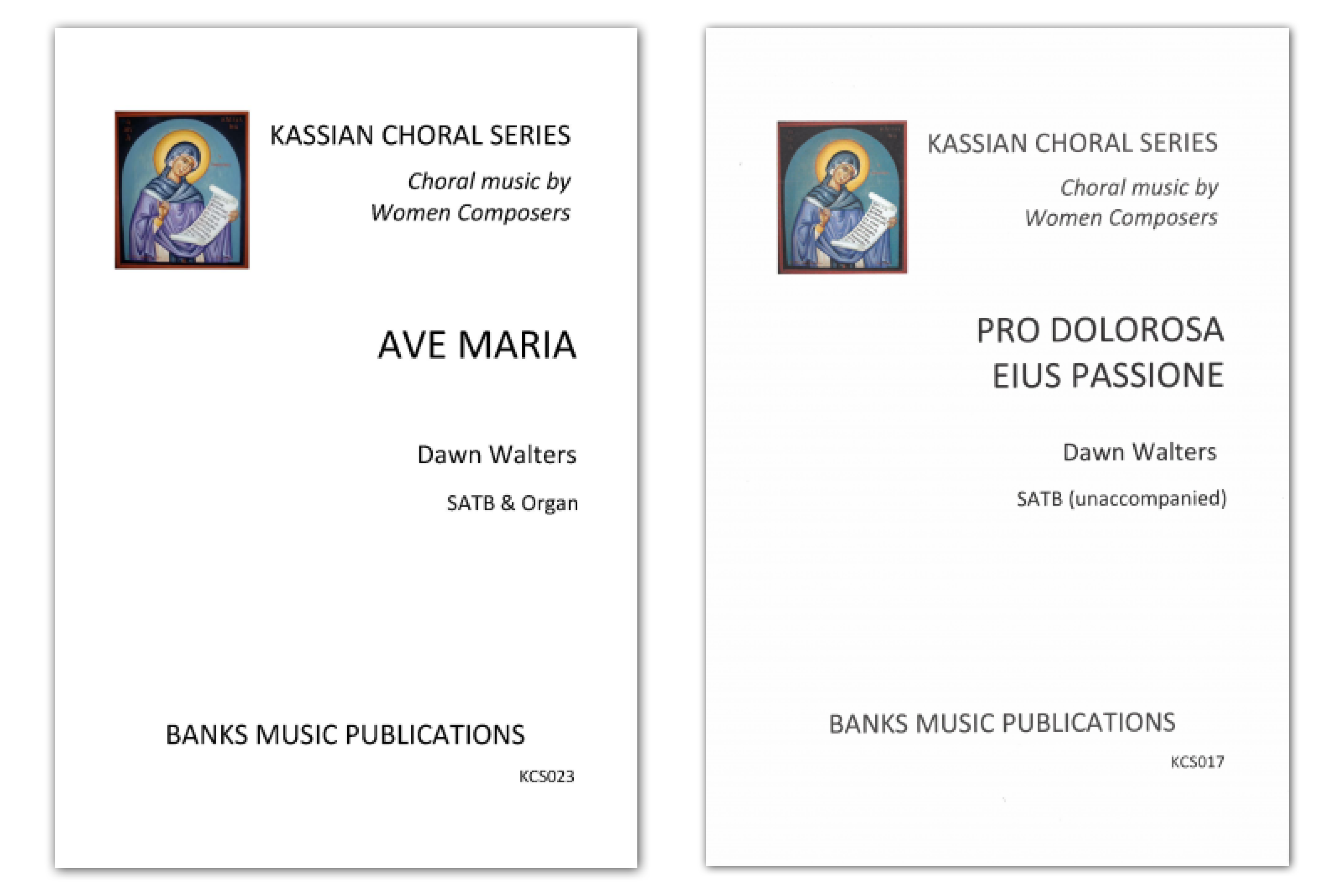
PRECES AND RESPONSES
PRECES, RESPONSES & THE LORD’S PRAYER (SET 2) [E/M]
June Nixon
Encore Publications 020791 £2.25
PRECES, RESPONSES & THE LORD’S PRAYER [E]
Gail Randall
Encore Publications 020797 £2.75
PRECES, RESPONSES & THE LORD’S PRAYER [E/M]
Joy Williams
Encore Publications 020792 £2.75
Of several sets of Preces and Responses recently published by Encore Publications, these three stand out as written by composers with something distinctive to add to the genre. June Nixon, ever reliable, contributes a set that feels lively, not necessarily by being fast (no tempo mark is given) but by having an energy in much of the writing, with the melody line characterized by an upward fourth leading onto important chords. Gail Randall’s set is particularly distinguished by a setting of the Lord’s Prayer that is, in effect, a mini motet, with the opening words reappearing to introduce each new sentence of the prayer. Joy Williams shapes each response and uses the lower parts to make the music flow through them. There are PDF previews of these three and many other recent sets of Preces and Responses on the Encore Publications website.
Julian Elloway
ORGAN MUSIC
E EASY
M MEDIUM
D DIFFICULT
MANUALS ONLY
MANUAL MINIATURES, VOLUME 1 [E–M]
Tim Knight
Tim Knight Music TKM898 £12.95
6 MINIATURES FOR MANUALS, SET 4 [E–M]
Tim Knight
Tim Knight Music TKM908 £5.95
Manual Miniatures, Volume 1 gathers 18 pieces originally published as Volumes 1–3 of 6 Miniatures for Manuals. The fourth set of six remains as a separate publication, and so the two volumes listed above contain 24 pieces in all. Each is a single page, short enough to be learnable by a beginner organist or an organist without a pedalboard, but long enough to be a fully worked-out composition, suitable for use, for example, as a short after-service voluntary. Many have characterful titles such as Fanfare, Sarabande, Elegy or Pavane, while others are more functional: Processional, Intrada, etc. There is a wealth of material here for manuals alone or with the occasional pedal notes that would make the left hand easier.
James L. Montgomery

VOLUNTARIES
BAROQUERIE: SUITE FOR ORGAN [M–D]
Ronald Corp
Banks Music Publications 14120 £5.95
Baroque forms (Toccata, Prelude, Gigue) and neoclassical figuration provide a starting point for the faster movements, between which are a contrasting Aria, built over a five-bar ground, and an Interlude. The Prelude has the character of a scherzo, mostly in 5/8. The opening Toccata and the final Gigue are both really toccatas, with the Gigue in 6/8 as one would expect. Tonal right-hand passages tend to be disrupted by more chromatic left-hand ones, but always with poise and charm, as if with a smile that would be shared by the listeners.
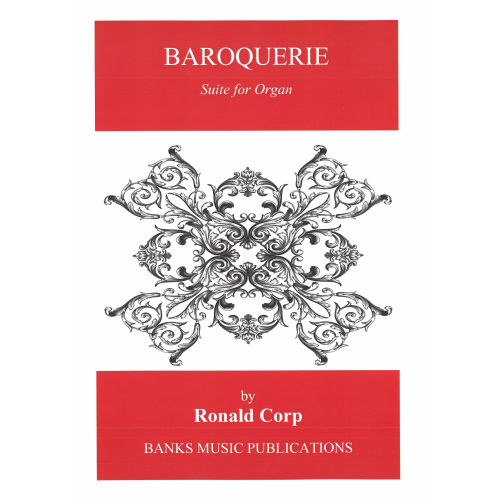
FANTASIA ON WESTMINSTER ABBEY [E/M]
Vernon Hoyle
Banks Music Publications 14129 £4.50
TOCCATA IN F SHARP MINOR [D]
John Hosking
Banks Music Publications 14148 £4.95
FESTIVO [D]
Ronald Corp
Banks Music Publications 14119 £4.50
FESTAL POSTLUDE [E/M]
Tim Knight
Tim Knight Music TKM903 £7.97
MARCHES FOR A MONARCH [M]
Gordon Lawson
Banks Music Publications 14127 £6.95
These five celebratory pieces will be welcome on a variety of festive occasions. Vernon Hoyle presents the Westminster Abbey theme four times at different tempi and starting once in the minor, along with various introductions and links. Hemiolas offer a nod towards Purcell, although the overall feel is of more recent majesty and pomp. John Hosking’s Toccata (a movement from his Celebration Suite) requires an excellent manual technique with its difficult right-hand figurations. It is certainly exciting, although I was relieved to find two YouTube performances by the composer that show that the piece can be just as effective at metronome marks a little slower than those printed.
Ronald Corp’s Festivo moves from E flat to E major via many deviations. It retains its tempo in what appears to be a slower central section and builds to a spectacular, blazing conclusion. The Festal Postlude by Tim Knight has a jaunty swagger. Its six-note motif reappears in different guises, always cheerful, including the more gentle central section, before a recapitulation and a triumphant final nine bars.
Marches for a Monarch celebrate the Diamond and Platinum Jubilees of Queen Elizabeth II. Gordon Lawson’s first march is in the Walton or Coates tradition, with a confident march surrounding a quieter central section and a Maestoso coda. The second is rather subtler and rhythmically less clear-cut: I particularly like the way the main theme emerges more quietly out of the preceding loud music. The thoughtful central section builds to a grand climax before the march repeats with a ‘pleno’ conclusion.
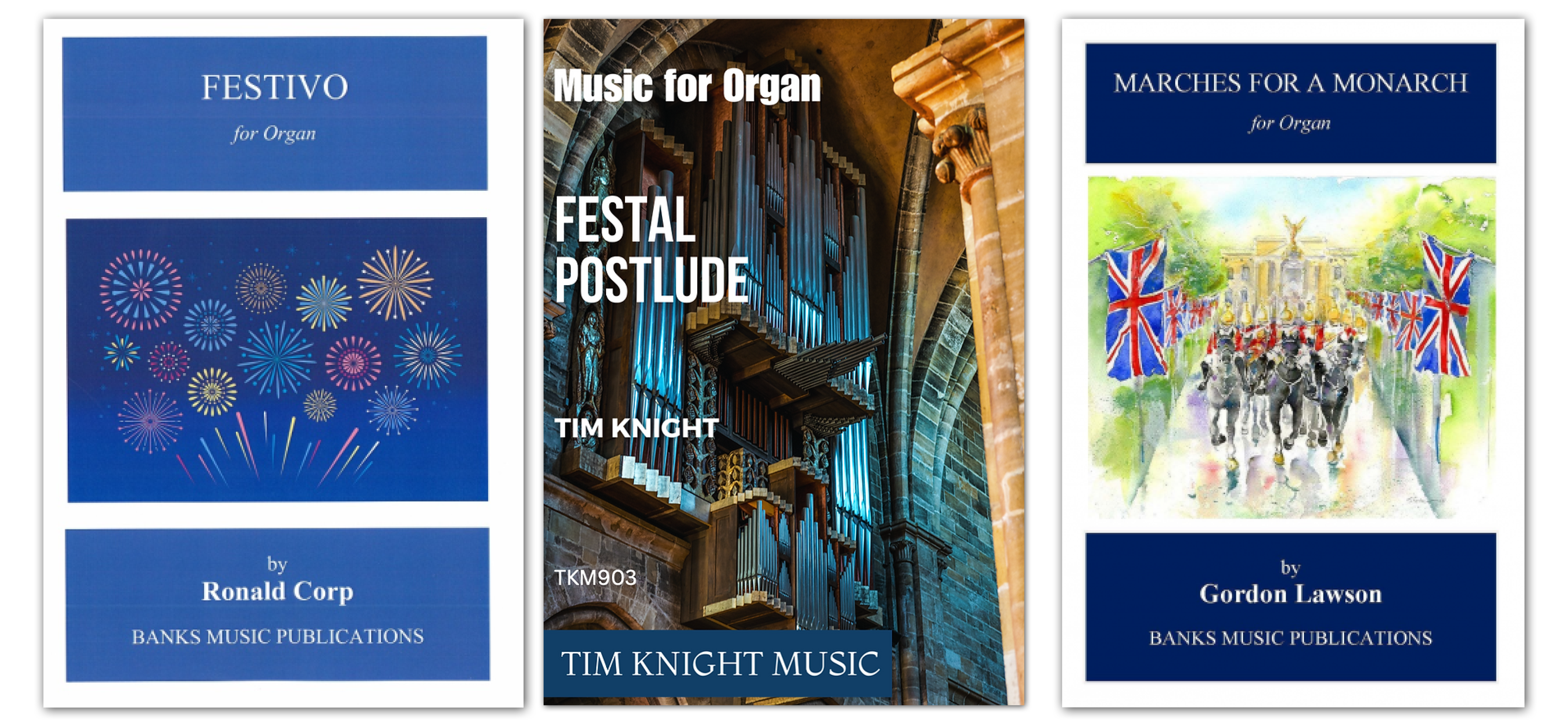
IMPROVISATION ON ‘BUNESSAN’ [E/M]
Vernon Hoyle
Banks Music Publications 14130 £3.95
Whether sung to ‘Morning has broken’ as so often at weddings and funerals, to ‘Child in the manger’ or one of the several other texts with which it is coupled, Bunessan is a distinctive and beautiful tune that is enhanced by Vernon Hoyle’s contemplative treatment. Sometimes we hear the tune unadorned; sometimes the melody seems to go off in its own direction, but never losing its sense of musical purpose.
Duncan Watkins
ANTHOLOGIES
OXFORD HYMN SETTINGS FOR
ORGANISTS: VOLS. 8 AND 9
[MOSTLY M]
edited by Rebecca Groom te Velde and Alan Bullard
Volume 8 (General Hymns 1):
Oxford 978-0-19-356067-3 £27.75
Volume 9 (General Hymns 2):
Oxford 978-0-19-356068-0 £27.75
OXFORD HYMN SETTINGS FOR
ORGANISTS: NINE-VOLUME
BOX SET [MOSTLY M]
Oxford 978-0-19-357655-1 £194.95
Ten years after the initial volumes covering Advent, Christmas and Epiphany, and four years after Volume 7 (Holy Communion), this huge series reaches the final two volumes. There are 80 ‘general’ hymns that did not fit into the previous volumes, divided alphabetically with Abbot’s Leigh to Melcombe in Volume 8 and Melita to Woodlands in Volume 9. As before, all the pieces were specially commissioned from composers largely based in the US and the UK, while most of the hymns are relevant to all major denominations. As well as the expected hymnody, there are a small number of spirituals and worship songs that suit themselves to treatment using a conventional church organ (with pedals). Inevitably, a few hymns are much better known in one territory or the other, but those are in a minority. The settings are stylistically diverse and suitable for use as preludes, processionals, fanfares, interludes, meditations, postludes and much more, including recital use. Composers range from A (Kristina Arakelyan and Malcolm Archer) to W (Alison Willis). I have my favourites among the pieces; you will have yours!
The conclusion of the series is also marked by a composite box set that, despite the price, is worth buying by any organist with not more than one or two volumes already. Rebecca Groom te Velde has been a constant through the series, initially with co-editor David Blackwell, then David Bednall, and most recently Alan Bullard. The companion website at https://global.oup.com/booksites/content/ohso/ lists all the hymn tunes and composers (with biographies). The box set is a worthy tribute to a project that was well conceived at the start, imaginative in the range of composers commissioned, and well managed through the ten years.
Duncan Watkins
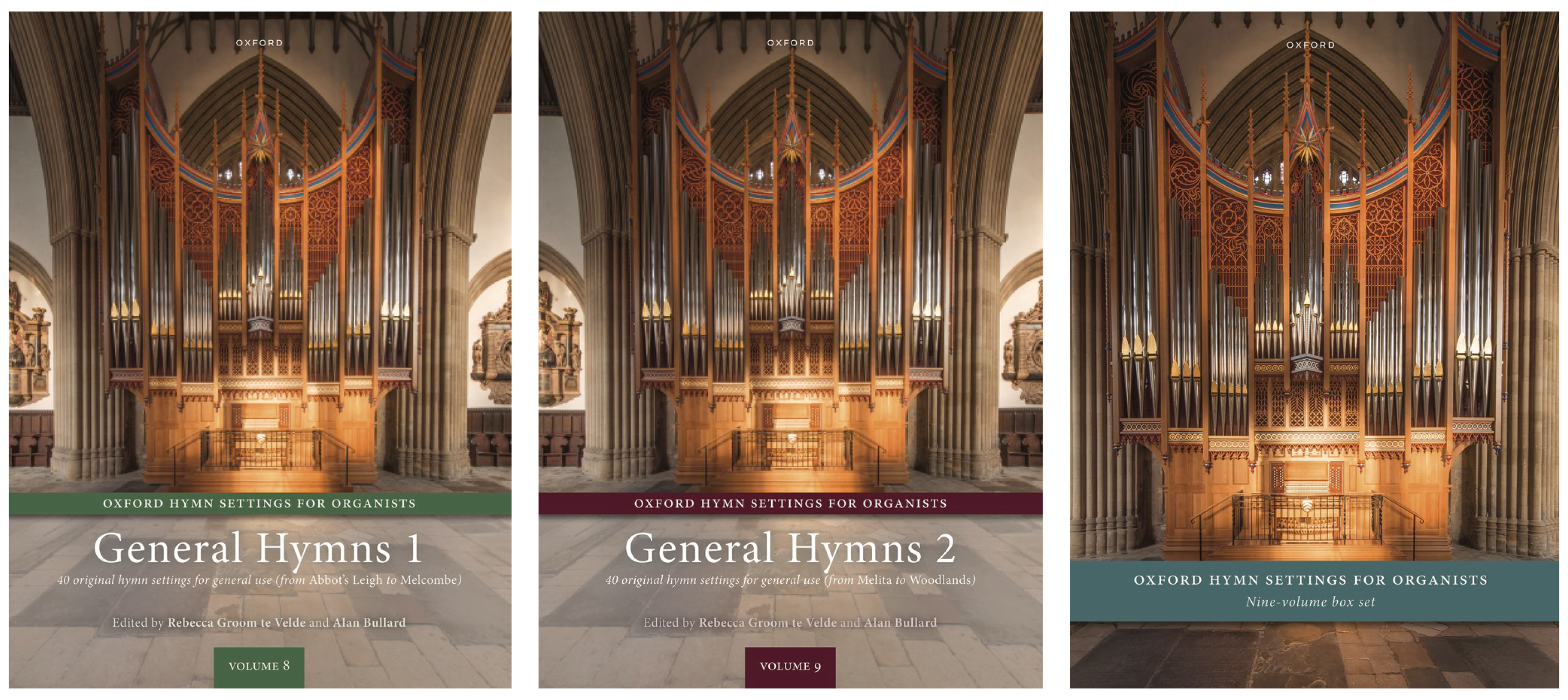
BE STILL FOR THE PRESENCE: VOL. 1
Church Organ World COW-2024-017 £25.00
These 20 preludes, interludes and meditations by 20 different composers are mostly based on hymn tunes and are clearly conceived for use before, during or after church services. Many of the pieces set in motion the tune with an accompanying pattern that is followed through to the end, which can be what is needed in the context of worship. Others have more variety, such as Keith Harrington’s Jesus blessed saviour that is a theme and variations on Eudoxia and Caswall¸ or Ian Tracey’s expressive and wide-ranging Four versets on ‘Picardy’.
Ian Higginson’s Reflection is one of the ‘free compositions’, not based on hymns. Ian Jordinson enjoys the rising and falling phrases of Amazing Grace. Annette Butters contributes a slow and movingly intense Prelude on St Agnes. It is surprising that hers is the only female name in the anthology. Church Organ World has been seeking contributions for a further volume; perhaps there will be a different gender balance in Volume 2. The complete contents list of Volume 1 can be explored easily on the Church Organ World website.
Julian Elloway
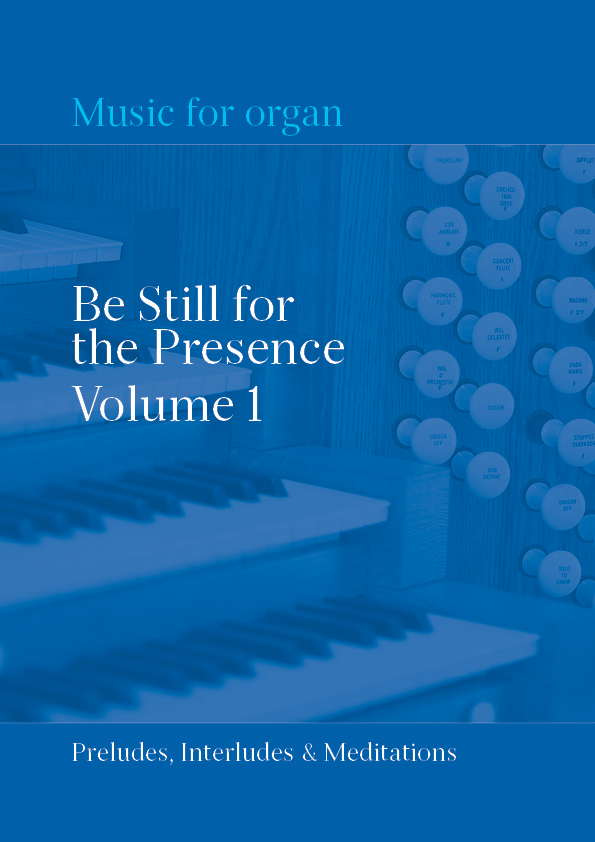
TRANSCRIPTIONS
ENIGMA VARIATIONS Op. 36 [D]
Edward Elgar arr. Otto Depenheuer
Edition Dohr 20402 £18.95
It is over six years since Sunday by Sunday reviewed Eberhard Hofmann’s transcription for organ of Elgar’s Variations on an original theme published by Carus. Hofmann omitted three of the 14 variations that he judged least suited for performance on organ; he also suggested changing the order of the remaining 11, so as to conclude with ‘Nimrod’. Now we have this new transcription by Otto Depenheuer, complete and in Elgar’s intended order. Depenheuer has considerable experience, with many organ transcriptions to his name, included in his ‘édition bon(n)orgue’ published as an imprint of Edition Dohr. Of the three movements omitted by Hofmann, nos. 10 (the Dorabella ‘Intermezzo’) and 11 (G.R.S.) are certainly tricky in the arrangements presented here, as they try to imitate Elgar’s masterly orchestrations. The Finale, however, while not easy, has been turned into a satisfying organ piece. In the remaining movements, Depenheuer follows the orchestral score less slavishly and is prepared to make adaptations, especially to inner parts, that make it feel more like original organ music.

THE FOUR SEASONS Op. 8 [M–D]
Antonio Vivaldi arr. Kiyo Watanabe
Trumph T-074027 £24.50
With three years to learn them before 2028 and the 350th anniversary of Vivaldi’s birth, here are skilful organ transcriptions of The Four Seasons. Where they are not obvious, there are added pedalling, fingering and hand division indications. The informative introduction by John Henderson includes English translations of the original sonnets that headed each concerto, along with Vivaldi’s descriptive text during each movement - such as ‘bird song’, ‘thunder’, ‘dog barking’, ‘the shepherd weeping’ and so on – so you can give a programmatic performance. Vivaldi’s music works well for organists with nimble fingers; these transcriptions will give much pleasure to players and audience.
SIX ARIAS [E/M–D]
Giacomo Puccini arr. Kiyo Watanabe
Trumph T-074030 £15.00
REQUIEM [mostly M]
Gabriel Fauré arr. Kiyo Watanabe
Trumph T-074029 £9.50
If you have ever felt the urge to play ‘Nessun dorma’ as an organ solo at the end of a service but have been daunted by the look of the piano part in a vocal score, here is the solution. The same applies to ‘Vissi d’arte’ from Tosca, ‘Un bel di, vedremo’ from Madama Butterfly, ‘Quando me’n vo’’ (‘Musetta’s Waltz’ from Act 2 of La bohème), ‘O mio babbino caro’ from Gianni Schicchi and, less well known, ‘Ch’ella mi creda’ from La fanciulla del West. The music is transcribed for two manuals and pedals, and does not need a large instrument for the essence of Puccini’s music to be conveyed.
Fauré’s Requiem is presented as a vocal score with a three-stave organ part that appears to be an arrangement for organ of the final orchestral version of the work (that may or may not have been orchestrated by Fauré himself). In the parts of the Sanctus and Agnus Dei that can cause particular difficulty when accompanying the work on organ alone, Kiyo Watanabe offers a sensible and playable organ part. The metal comb binding will be particularly useful in encouraging the music to lie flat on the music rest.
Julian Elloway
